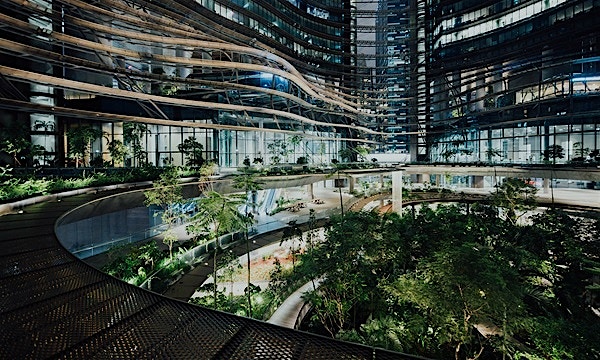Imagine a world where products are crafted with sustainability at their core, where innovation seamlessly aligns with quality and where customers benefit from solutions tailored to their unique needs. Achieving this vision requires more than technical expertise; it demands a mindset that blends rigor, creativity, technology and collaboration. These principles must be applied throughout every stage of the product development lifecycle, from ideation and prototyping to testing and deployment.
On a podcast episode of Sustainable Product Design, Santhosh Jayaram, Global Head of Sustainability, highlighted a critical shift in consumer preferences towards sustainable products.
He noted, “We are seeing a growing preference towards sustainable products from the consumer side. Companies are looking at ways to make their products and services more sustainable and it is in that direction that they have started incorporating sustainability principles right at the product design stage.”
Companies have long recognized that design decisions determine most of a product’s manufacturing, operating and maintenance costs in the journey of product engineering. The same logic applies to sustainability, with McKinsey analysis suggesting that while R&D accounts for 5% or less of the total cost of a product, it influences up to 80% of that product’s resource footprint.
Advanced materials and processes in sustainable engineering
About 80% of a product’s environmental impact is determined at the design stage, making it a crucial phase for fostering sustainability. Sustainable design involves considering environmental, social and economic impacts from the initial phase through to the end of life, analyzing every element of the product and service lifecycle to minimize negative impacts.
Sustainable engineering begins with the strategic selection of materials. Advanced materials —such as bioplastics, recycled composites and low-impact metals — are increasingly featured in product designs. These materials not only lower environmental impact but also often improve performance and durability. Engineers and designers are adopting these innovations to create products that are both resilient and eco-friendly.
HCLTech is at the forefront of incorporating advanced materials into engineering solutions, driving the future of sustainable design. A key aspect of achieving sustainability is optimizing procurement processes. At HCLTech, sustainable sourcing goes beyond acquiring materials, products and services responsibly; it involves instigating positive change across the entire supply chain, including suppliers and partners.
To support this, HCLTech offers a range of solutions and proof-of-concepts (PoCs) that utilize SAP products like Ariba and Fieldglass. These tools leverage data from third-party providers to enhance sustainable sourcing practices.
Technology driving sustainable product engineering
Technology and innovation are pivotal in advancing sustainable product engineering, transforming traditional practices into cutting-edge, eco-friendly methodologies. Emerging technologies shape how products are conceived, developed and maintained, aligning with sustainability goals while ensuring high performance and efficiency.
According to McKinsey, technological advancements are shifting lifetime emissions from product operation to production. This shift is driven by user demand for added features and materials, increasing production complexity. For example, domestic heat pumps and high-efficiency electric motors, which include additional carbon-intensive materials like copper and rare-earth magnets, exemplify this trend.
Artificial intelligence (AI) and machine learning (ML) play significant roles in optimizing product design and performance. AI algorithms can predict material behavior, enhance design for sustainability and forecast maintenance needs, while ML continuously improves product designs based on data. HCLTech harnesses AI and ML to deliver solutions that not only meet but exceed sustainability criteria, ensuring products are both efficient and future ready.
The IoT further enhances product sustainability by embedding sensors and connectivity into products, enabling real-time monitoring and management of energy usage. This integration leads to more efficient operation and reduces environmental impact while facilitating predictive maintenance that extends product lifespan and minimizes waste. HCLTech leverages IoT technologies to develop smart, connected products that align with sustainable engineering practices, offering clients solutions that are both innovative and eco-conscious.
Looking ahead
Integrating technology and innovation into sustainable design and product engineering is crucial for creating high-performing, environmentally responsible products. By focusing on advanced materials, leveraging AI and ML and integrating IoT, organizations can drive significant advancements in sustainability.
HCLTech demonstrates how leveraging these technologies and practices can lead to innovative, customer-centric solutions that not only address today’s needs but also pave the way for a sustainable future.
For those seeking a partner to navigate the complexities of sustainable product engineering, HCLTech provides the expertise and capabilities to transform ideas into reality while adhering to the highest standards of sustainability.





